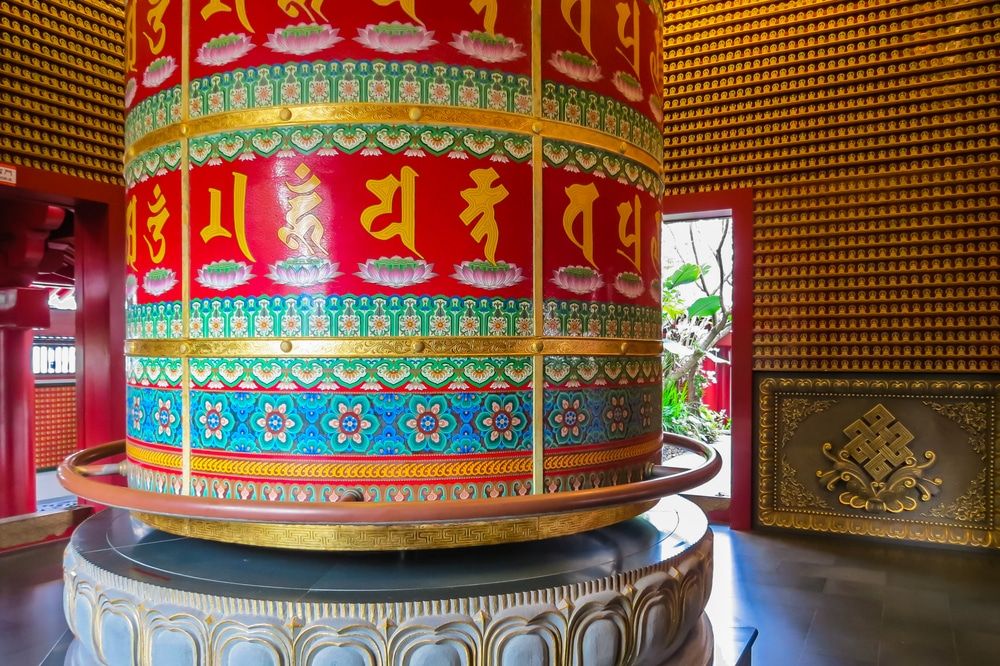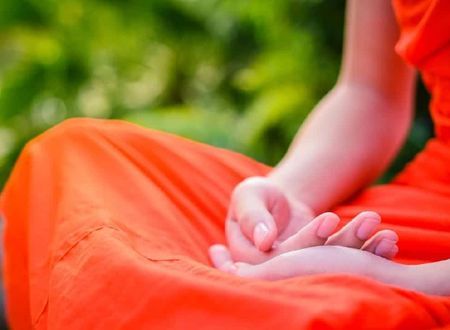Just today, Meera ji left a comment on my post:
Rishi guide us more on Buddha as a personification, person and title!
There was no doubt in my mind about where her thought was coming from. In my Gita series, I have told several Buddhist stories, many of them involving the Buddha Amitabha.
In my last post, I noted a story from the life of Samantabhadra, a Buddha (or bodhisattva) who is often known as the “Adibuddha” or “first buddha”. However, Samantabhadra is the Adibuddha in Nyingma Buddhism, and I had listed several other Adibuddhas. This concept, however, only exists in Vajrayana Buddhism and its subsets. So, Mahayana has no Adibuddha, only the Five Tathagatas.
Of course, this was extremely confusing. So let me simplify and break this down for you a bit.
Buddha As A Personification
This is a tough one. Is there even a personification of a Buddha? The best that I can think of is that a Buddha is the personification of a near-perfect human. Those who have conquered their emotions and thoughts completely. And, those who’re in control of their minds to an extent that it causes them to perform miracles like reading others’ minds, and remembering their past lives (the greater the Buddha, the more they will remember). I’ll elaborate more on this soon.
Buddha As A Person
What the western world, and now essentially everyone who isn’t Buddhist, thinks is “The Buddha” is actually Gautama Buddha.
Gautama Buddha was a part of the Shakyamuni triad. Along with the bodhisattvas (people on the path to Buddhahood) Manjusri and Samantabhadra. Yes, I know I said that Samantabhadra was an Adi Buddha, but that is only in Nyingma Buddhism. Samantabhadra is also known as Sumana Samana Deviyo, the guardian of Sri Lanka.
Back to Gautama Buddha, he was the founder of Buddhism as an “organized religion”. What he really did was bring awareness to people about Buddhism. Buddhism was founded all the way back when the Adibuddha, Primordial Buddhas, or Five Tathagathas existed. But Gautama Buddha has become “The Buddha” now.
Buddha As A Title
“Buddha” is a title for a person that has achieved an extremely high state of mind. There’s no easy way to explain this, so I’ll just use the characteristics of a buddha to explain.
First of all, there are ten vows that one who wishes to become a Buddha must take. These were created by Samantabhadra. Here are those ten vows:
- To respect all Buddhas.
- To praise the Tathagata.
- To give generously.
- To repent misdeeds and evil karmas.
- To rejoice in others’ victories, merits, and virtues.
- To ask the Buddhas to continue teaching.
- To ask the Buddhas to remain in the world.
- To follow the teachings of the Buddhas at all times.
- To benefit all living beings.
- To transfer all merits and virtues to benefit all living beings.
And then when we do all of that, we attain Buddhahood. But what are those characteristics, all of the things that have caused us to be called a Buddha? Well, Buddhas have:
- To come and be gone. (Tathagata)
- To be a worthy one. (Arhat)
- To be self-enlightened. (Samyak-sambuddha)
- To be perfect in knowledge and conduct. (Vidya-carana-sampanna)
- To be well gone past this world. (Sugata)
- To be a knower of the world. (Lokavida)
- To be unsurpassable. (Anuttara)
- To be the leader of monks. (Purusa-damya-sarathi)
- To be the teacher of all. (Sasta deva-manusyanam)
- To be blessed. (Bhagavat)
The Five Tathagatas
This is something important to talk about. The Five Tathagatas are the five “original buddhas” in Mahayana and Vajrayana Buddhism. Each of them stands for an important quality. They also have a “wisdom” or “path” associated with them. The Buddhas with vajras as their symbols are mainly worshipped in Vajrayana Buddhism, and the others are mainly Mahayana.
- Amoghasiddhi Buddha:
- This Buddha’s shrine is traditionally kept at the north of any set of shrines of the Five Tathagatas.
- He represents fearlessness.
- His color is green.
- His path is one of perfect practice.
- This path is for the ones who are envious.
- And his symbol is two Tibetan vajras.
- Akshobhya Buddha:
- This Buddha’s shrine is often found on the east side of a set.
- He represents humility.
- His color is blue.
- Have you ever wondered why so many sages are represented as blue? Well, some of them (like Krishna) are dark in color, but they have learned to channel aggression into wisdom. That is what the path of Akshobhya is, the path of reflection.
- This path is for ones who are naturally aggressive.
- Akshobhya’s symbol is a single Tibetan vajra.
- Ratnasambhava Buddha:
- This Buddha is located on the south side.
- He represents generosity and giving.
- His color is gold.
- Ratnasambhava’s path is the path of equanimity and calmness.
- This path is for ones who are naturally arrogant or greedy.
- Ratnasambhava’s symbol is a jewel.
- Amitabha Buddha:
- Amitabha is located on the west side.
- He represents contemplation.
- Amitabha’s color is red.
- His path is one of observation.
- This is a useful path for self-centered people, as they will learn that the world doesn’t revolve around them.
- Amitabha’s symbol is the lotus.
- Vairocana Buddha:
- The shrine located at the center is Vairocana’s.
- He represents teaching dharma to others.
- His color is white.
- His path is learning the essence of dharma.
- This is the final goal and is for the ones who have gone down the paths and finished it, and are now hungry for more.
- His symbol is the wheel.
The Five Tathagatas represent the five essential qualities of Buddhism (or anything, for that matter). Finally, this is all you need to remember: fearlessness, humility, generosity, contemplation, and the essence of life!
I hope you enjoyed this post. If you have any confusion, feel free to comment with your questions and I’ll try to answer.
Thank you for reading!









Comments are closed as per the author's request.
20 COMMENTS
Please login to read members' comments and participate in the discussion.